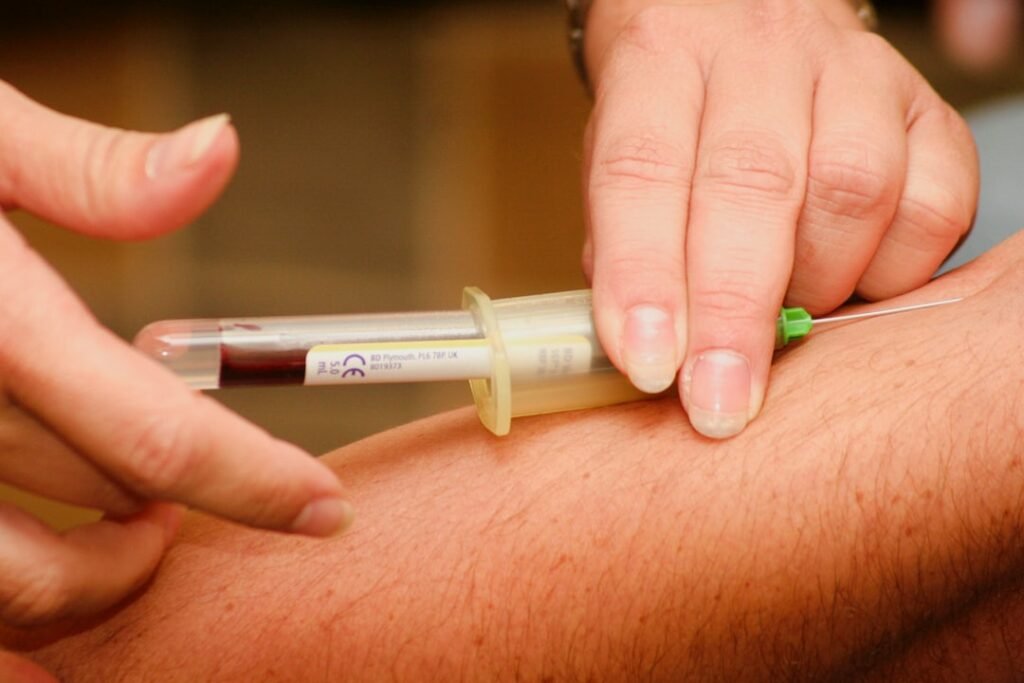Effective communication is crucial in any medical setting, but it becomes even more important in Chinese medical settings due to cultural and language differences. In order to provide the best possible care to Chinese patients, healthcare professionals must be able to effectively communicate with them. This includes not only speaking the language, but also understanding cultural nuances and being able to establish rapport. Poor communication can lead to misunderstandings, misdiagnoses, and a breakdown in trust between patients and healthcare providers. Therefore, it is essential for healthcare professionals to develop the necessary skills to communicate effectively in Chinese medical settings.
Table of Contents
ToggleKey Takeaways
- Effective communication is crucial in Chinese medical settings
- Basic Chinese phrases can help establish rapport with patients
- Understanding common symptoms and conditions in Chinese medicine is important
- Asking questions and gathering information from patients in Chinese is necessary for accurate diagnosis
- Explaining treatment options and procedures in Chinese medical terminology is essential for patient understanding
The Importance of Effective Communication in Chinese Medical Settings
Effective communication is crucial in Chinese medical settings for several reasons. First and foremost, it allows healthcare professionals to accurately assess and diagnose patients. Without clear communication, important information may be missed or misunderstood, leading to incorrect diagnoses and ineffective treatment plans. Additionally, effective communication helps establish trust and rapport between patients and healthcare providers. This is particularly important in Chinese culture, where trust and respect for authority figures are highly valued. When patients feel heard and understood, they are more likely to comply with treatment plans and follow medical advice.
On the other hand, poor communication can have serious consequences in Chinese medical settings. Misunderstandings can lead to unnecessary tests or treatments, which can be costly and potentially harmful to patients. It can also lead to frustration and dissatisfaction among both patients and healthcare providers. Furthermore, poor communication can contribute to disparities in healthcare outcomes for Chinese patients. Language barriers and cultural differences can make it difficult for Chinese patients to access appropriate care and fully understand their health conditions.
Basic Chinese Phrases for Greeting Patients and Establishing Rapport
In order to establish rapport with Chinese patients, it is important for healthcare professionals to learn some basic Chinese phrases for greeting patients. This shows respect and effort on the part of the healthcare provider, which can help build trust with the patient. Some common phrases include:
– 你好 (nǐ hǎo) – Hello
– 您好 (nín hǎo) – Hello (more formal)
– 请问 (qǐng wèn) – May I ask…?
– 很高兴见到您 (hěn gāo xìng jiàn dào nín) – Nice to meet you
– 请坐 (qǐng zuò) – Please have a seat
Using these phrases can help create a welcoming and friendly environment for Chinese patients, and it shows that the healthcare provider is making an effort to communicate in their language.
Understanding Common Symptoms and Conditions in Chinese Medicine
| Common Symptoms and Conditions | Description | Treatment |
|---|---|---|
| Headaches | Pain in the head or neck area | Acupuncture, herbal medicine, dietary changes |
| Insomnia | Difficulty falling or staying asleep | Acupuncture, herbal medicine, lifestyle changes |
| Anxiety | Excessive worry or fear | Acupuncture, herbal medicine, meditation, exercise |
| Depression | Feelings of sadness or hopelessness | Acupuncture, herbal medicine, counseling, lifestyle changes |
| Digestive issues | Stomach pain, bloating, diarrhea, constipation | Acupuncture, herbal medicine, dietary changes, lifestyle changes |
| Menstrual disorders | Irregular periods, painful periods, PMS | Acupuncture, herbal medicine, dietary changes, lifestyle changes |
| Infertility | Difficulty conceiving | Acupuncture, herbal medicine, dietary changes, lifestyle changes |
In order to effectively communicate with Chinese patients, healthcare professionals should have a basic understanding of common symptoms and conditions in Chinese medicine. Traditional Chinese medicine (TCM) views health and illness differently than Western medicine, so it is important to be familiar with these concepts. Some common symptoms and conditions in Chinese medicine include:
– Qi deficiency: This refers to a lack of vital energy, which can manifest as fatigue, weakness, and poor digestion.
– Yin deficiency: This refers to a lack of cooling and nourishing energy, which can manifest as hot flashes, night sweats, and dryness.
– Yang deficiency: This refers to a lack of warming and activating energy, which can manifest as cold hands and feet, low energy, and slow metabolism.
– Blood stagnation: This refers to a blockage or stagnation of blood flow, which can manifest as pain, swelling, and dark or clotted menstrual blood.
By understanding these concepts, healthcare professionals can better understand their patients’ symptoms and provide appropriate treatment options.
Asking Questions and Gathering Information from Patients in Chinese
When gathering information from Chinese patients, it is important for healthcare professionals to ask questions in a clear and concise manner. It is also important to use active listening skills to ensure that the patient feels heard and understood. Some tips for asking questions and gathering information from patients in Chinese include:
– Use simple and straightforward language: Avoid using medical jargon or complex terminology that may confuse the patient. Use clear and simple language to ensure that the patient understands the questions being asked.
– Ask open-ended questions: Instead of asking yes or no questions, ask open-ended questions that allow the patient to provide more detailed information. This can help healthcare professionals get a better understanding of the patient’s symptoms and concerns.
– Use non-verbal cues: In addition to asking questions verbally, use non-verbal cues such as nodding or maintaining eye contact to show that you are actively listening to the patient. This can help build trust and rapport.
By asking questions in a clear and concise manner and actively listening to the patient’s responses, healthcare professionals can gather important information that will help inform their diagnosis and treatment plan.
Explaining Treatment Options and Procedures in Chinese Medical Terminology

When explaining treatment options and procedures to Chinese patients, it is important to use clear and simple language. Avoid using medical jargon or complex terminology that may confuse the patient. Instead, use plain language and provide examples or analogies to help the patient understand. It is also important to check for understanding by asking the patient if they have any questions or if there is anything they would like clarified.
Some common treatment options and procedures in Chinese medicine include:
– Acupuncture: This involves inserting thin needles into specific points on the body to stimulate energy flow and promote healing.
– Herbal medicine: This involves using plants, minerals, and animal products to create customized herbal formulas that address specific health concerns.
– Cupping: This involves placing heated cups on the skin to create suction, which helps relieve muscle tension and promote blood flow.
– Tui na: This is a form of Chinese therapeutic massage that involves applying pressure to specific points on the body to promote healing and relaxation.
By explaining these treatment options and procedures in clear and simple language, healthcare professionals can ensure that Chinese patients understand their options and can make informed decisions about their healthcare.
Discussing Medications and Dosages in Chinese
When discussing medications and dosages with Chinese patients, it is important to use clear and simple language. Avoid using medical jargon or complex terminology that may confuse the patient. Instead, use plain language and provide examples or analogies to help the patient understand. It is also important to check for understanding by asking the patient if they have any questions or if there is anything they would like clarified.
Some tips for discussing medications and dosages with Chinese patients include:
– Use visual aids: If possible, provide visual aids such as pictures or diagrams to help the patient understand how to take their medication and what the correct dosage is.
– Repeat and summarize: After explaining the medication and dosage, repeat and summarize the information to ensure that the patient has understood. This can help prevent misunderstandings and ensure that the patient takes their medication correctly.
– Provide written instructions: In addition to verbal instructions, provide written instructions in Chinese that outline how to take the medication and what the correct dosage is. This can serve as a reference for the patient and help prevent confusion.
By discussing medications and dosages in clear and simple language, healthcare professionals can ensure that Chinese patients understand how to take their medication correctly and avoid any potential complications.
Providing Instructions for Home Care and Self-Management in Chinese
In addition to providing treatment options, healthcare professionals should also provide instructions for home care and self-management in Chinese. This includes providing guidance on lifestyle changes, dietary recommendations, and exercises or stretches that can help manage symptoms or promote healing. Some common home care and self-management instructions in Chinese medicine include:
– Dietary recommendations: Provide guidance on foods to eat or avoid based on the patient’s specific health condition. This may include recommendations for foods that promote energy, nourish the blood, or support digestion.
– Lifestyle changes: Provide guidance on lifestyle changes that can help manage symptoms or promote healing. This may include recommendations for stress reduction techniques, sleep hygiene, or exercise routines.
– Self-care techniques: Provide instructions on self-care techniques that the patient can do at home to manage their symptoms. This may include techniques such as acupressure, herbal remedies, or breathing exercises.
By providing instructions for home care and self-management in Chinese, healthcare professionals can empower Chinese patients to take an active role in their own healthcare and improve their overall well-being.
Addressing Patient Concerns and Questions in Chinese
When addressing patient concerns and questions in Chinese, it is important for healthcare professionals to approach the conversation with empathy and understanding. Chinese patients may have cultural beliefs or concerns that are different from those of Western patients, so it is important to listen attentively and validate their concerns. Some tips for addressing patient concerns and questions in Chinese include:
– Listen attentively: Give the patient your full attention and listen attentively to their concerns. Avoid interrupting or rushing the conversation.
– Validate their concerns: Acknowledge the patient’s concerns and validate their feelings. Let them know that you understand their perspective and are there to support them.
– Provide clear and concise answers: When answering questions, use clear and simple language to ensure that the patient understands. Avoid using medical jargon or complex terminology that may confuse the patient.
By addressing patient concerns and questions in a compassionate and understanding manner, healthcare professionals can build trust with Chinese patients and ensure that they feel heard and supported.
Discussing Prognosis and Follow-Up Care in Chinese Medical Settings
When discussing prognosis and follow-up care with Chinese patients, it is important to use clear and simple language. Avoid using medical jargon or complex terminology that may confuse the patient. Instead, use plain language and provide examples or analogies to help the patient understand. It is also important to check for understanding by asking the patient if they have any questions or if there is anything they would like clarified.
Some tips for discussing prognosis and follow-up care in Chinese medical settings include:
– Use visual aids: If possible, provide visual aids such as diagrams or charts to help the patient understand their prognosis and what follow-up care may be necessary.
– Provide written instructions: In addition to verbal instructions, provide written instructions in Chinese that outline the patient’s prognosis and any necessary follow-up care. This can serve as a reference for the patient and help prevent confusion.
– Allow time for questions: Give the patient ample time to ask questions and address any concerns they may have about their prognosis or follow-up care. This can help ensure that the patient feels informed and empowered to make decisions about their healthcare.
By discussing prognosis and follow-up care in clear and simple language, healthcare professionals can ensure that Chinese patients understand their prognosis and what steps they need to take for their follow-up care.
Cultural Considerations and Etiquette in Chinese Healthcare Communication
When communicating with Chinese patients, it is important to be aware of cultural considerations and etiquette. Chinese culture places a strong emphasis on respect for authority figures, so it is important to approach interactions with a respectful and professional demeanor. Some cultural considerations and etiquette in Chinese healthcare communication include:
– Addressing patients by their title: In Chinese culture, it is common to address individuals by their title followed by their last name. For example, Mr. Zhang or Dr. Li.
– Using appropriate body language: In Chinese culture, maintaining eye contact is seen as a sign of respect and attentiveness. However, direct eye contact may be seen as confrontational or aggressive in some cases, so it is important to be aware of the patient’s comfort level.
– Being mindful of personal space: Chinese culture places a greater emphasis on personal space compared to Western cultures. It is important to be mindful of the patient’s personal space and avoid standing too close or touching them without their consent.
– Showing respect for elders: In Chinese culture, respect for elders is highly valued. It is important to show respect and deference to older patients, and to address them using appropriate honorifics.
By being aware of cultural considerations and etiquette in Chinese healthcare communication, healthcare professionals can ensure that they are providing culturally sensitive care and building trust with Chinese patients.
Effective communication is crucial in Chinese medical settings in order to provide the best possible care to Chinese patients. By learning basic Chinese phrases for greeting patients and establishing rapport, healthcare professionals can create a welcoming and friendly environment. Understanding common symptoms and conditions in Chinese medicine can help improve communication with patients and inform diagnoses and treatment plans. By asking questions and gathering information from patients in Chinese, healthcare professionals can ensure that they have a complete understanding of the patient’s health concerns. Explaining treatment options and procedures, discussing medications and dosages, providing instructions for home care and self-management, addressing patient concerns and questions, discussing prognosis and follow-up care, and navigating cultural considerations and etiquette are all important aspects of effective communication in Chinese medical settings. By developing these skills, healthcare professionals can improve patient outcomes and provide culturally sensitive care to Chinese patients.








